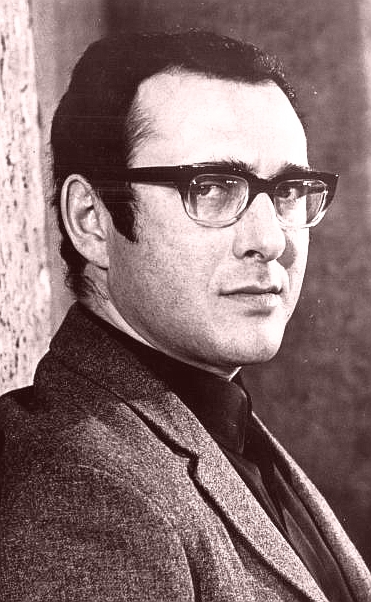Hello, everyone this Thinking Activity on task Comedy of Menace was assigned by Yesha Bhatt Ma'am Department of English MKBU. In this task, we have to write down the answer to any one of the four questions.
Comedy of Menace
The term "comedy of menace" refers to a subgenre of comedy that involves elements of threat, danger, or violence. The term was coined by critic Mel Gussow to describe the work of playwright Harold Pinter, who was known for his plays that combined elements of comedy and drama with an underlying sense of danger or threat.
Pinter's plays, which are often referred to as "Pinteresque," are characterized by their use of dramatic pauses, ambiguous language, and an atmosphere of tension and unease. These elements create a sense of uncertainty and menace, which is often heightened by the characters' inability to communicate openly and honestly with one another. Pinter's plays often explore themes of power dynamics, control, and the ways in which individuals manipulate and deceive one another in order to gain an advantage. The comedic elements of his plays often come from the absurdity of the situations and the absurdity of the character's behavior.
In addition to Pinter, other playwrights and writers who have been associated with the comedy of the menace genre include Edward Albee, Martin McDonagh, and Tracy Letts. These writers often use dark humor and violence to explore themes of power, control, and the human condition.
Brief Introduction of Author-
Harold Pinter
Harold Pinter (1930-2008) was a British playwright, actor, and director known for his contributions to the theater and film industries. He is considered one of the foremost playwrights of the 20th century and is often referred to as the "father of modern theatre." Pinter made his playwriting debut in 1957 with The Room, presented in Bristol. His conclusive breakthrough came with The Caretaker (1959), followed by The Homecoming (1964) and other plays. Pinter restored theatre to its basic elements: an enclosed space and unpredictable dialogue, where people are at the mercy of each other and pretense crumbles. With a minimum of plot, drama emerges from the power struggle and hide-and-seek of interlocution. Pinter’s drama was first perceived as a variation of absurd theatre but has later more aptly been characterized as a “comedy of menace”, a genre where the writer allows us to eavesdrop on the play of domination and submission hidden in the most mundane of conversations.
Harold Pinter that following an initial period of psychological realism proceeded to a second, more lyrical phase with plays such as Landscape (1967) and Silence (1968) and finally to a third, political phase with One for the Road (1984), Mountain Language (1988), The New World Order (1991) and other plays. But this division into periods seems oversimplified and ignores some of his strongest writing, such as No Man’s Land (1974) and Ashes to Ashes (1996). His work as a playwright, Pinter was also an accomplished actor and director. He appeared in numerous films and television shows and directed productions of his own plays, as well as those of other playwrights. He was the recipient of multiple awards and honors, including the Nobel Prize in Literature in 2005.
Movie review of The Birthday Party (1968)
The Birthday Party is a film adaptation of the Harold Pinter play of the same name. The film was released in 1968. The film is set in a boarding house on the English coast, where the main character, Stanley, is living. Stanley is a pianist who seems to be hiding from something in his past. On the surface, the film appears to be a straightforward comedy, but as the story progresses, it becomes clear that there is an underlying sense of menace and danger. His best-known screenplays are for The Servant (1963), The Accident (1967), The Go-Between (1971), and The French Lieutenant’s Woman (1981, based on the John Fowles novel). Pinter has also made a pioneering contribution as a director.
As strange visitors arrive at the boarding house, the atmosphere becomes increasingly tense and unsettling. The visitors, Goldberg and McCann, are both mysterious and menacing figures who seem to be searching for something or someone. As their true intentions are revealed, the film takes a turn towards the dramatic, and the comedy gives way to a sense of danger and threat. The Birthday Party is a unique and powerful film that combines elements of comedy and drama with an underlying sense of menace. Its strong performances, especially from Robert Shaw and Leonard Rossiter, and its clever use of Pinter's signature style make it a must-see for fans of the playwright and for anyone interested in unconventional and thought-provoking cinema.
Director- William Friedkin
Movie Cast
Robert Shaw as Stanley
Dandy Nichols as Meg
Moultrie Kelsall as Petey
Helen Fraser as Lulu
Sydney Tafler as Goldberg
One of the film's strengths is its strong performances, especially from Robert Shaw and Leonard Rossiter, who bring Pinter's complex and often enigmatic characters to life. Shaw's portrayal of Goldberg is particularly noteworthy, as he manages to convey a sense of menace and danger while also displaying a sly sense of humor.
Non-verbal Device
In the film The Birthday Party, there are several non-verbal devices that are used to convey meaning and enhance the overall atmosphere of the film.Non-verbal devices are silence, Pauses, and noises. Pinter’s uses of several think but early have the distinction of non-verbal. Pause and silence are used by
• To give a character time to think before saying.
• To avoid conversation.
One of the most prominent non-verbal devices used in the film is the use of dramatic pauses. Pinter's plays are known for their use of long, pregnant pauses, and the film adaptation of The Birthday Party is no exception. These pauses create a sense of tension and uncertainty, and they allow the audience to fill in the gaps with their own interpretations of the characters' intentions.
Another non-verbal device used in the film is the use of body language and physical gestures. The characters in the film use their posture, facial expressions, and hand gestures to convey meaning and emotions, and these non-verbal cues help to deepen the audience's understanding of the characters and their motivations. The use of non-verbal devices in The Birthday Party adds to the film's atmosphere of tension and unease, and it helps to deepen the audience's understanding of the characters and their relationships.
Pinter pause
The "Pinter pause," also known as the "Pinteresque pause," is a dramatic technique that involves a long pause in dialogue or action, usually for the purpose of creating tension or uncertainty. The term is named after playwright Harold Pinter, who was known for incorporating this technique into his plays.
In the film The Birthday Party, the Pinter pause is used to great effect to create a sense of tension and unease. The film is full of long, pregnant pauses that allow the audience to fill in the gaps with their own interpretations of the characters' intentions. These pauses also create a sense of uncertainty and ambiguity, which is characteristic of Pinter's style.
Pinter's stage directions indicate pause and silence when his characters are not speaking at all–has become a "trademark" of Pinter's dialogue called the "Pinter pause". For example in The Birthday Party,
MEG. Is that you Petey?
Pause.
Petey, is that you?
Pause.
Petey?
PETEY. What?
His pause or beat comes naturally in the rhythm of the conversation.
The Pinter pause is used throughout the film to heighten the sense of tension and to create an atmosphere of unease. It is a powerful non-verbal device that helps deepen the audience's understanding of the characters and their relationships and adds to the film's overall sense of mystery and danger.
In Pinter’s play when the play starts we found two or three person in the living room talking casually. But as the conversation goes on the casualness from the dialogue vanishes and we smell something wrong in the dialogues. Let’s see the starting of The Birthday Party…
What time did you go out this morning, Petey?
PETEY. Same time as usual.
MEG. Was it dark?
PETEY. No, it was light.
MEG. (Beginning to darn.) But sometimes you go out in the morning and it's dark.
PETEY. That's in the winter.
MEG. Oh, in winter.
PETEY. Yes, it gets light later in winter.
MEG. Oh.
Petey and Meg’s dialogues during morning breakfast, when Petey says in winter there is dark in the early morning, after hearing this she gives expressions like she don’t know this reality before and only today she came to know.
Thank you for Visiting....
[Word Count-1435]








No comments:
Post a Comment